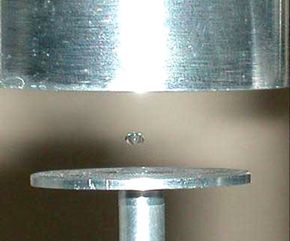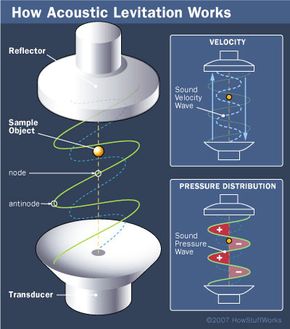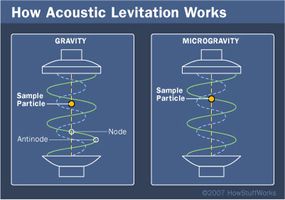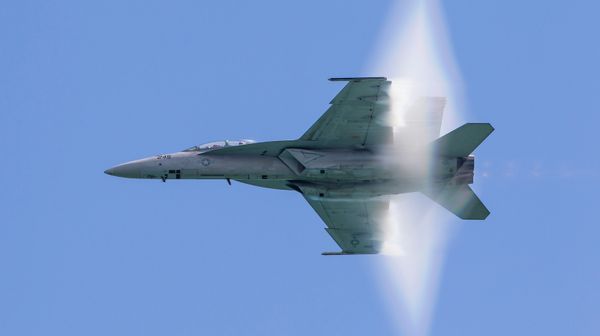A basic acoustic levitator has two main parts — a transducer, which is a vibrating surface that makes sound, and a reflector. Often, the transducer and reflector have concave surfaces to help focus the sound. A sound wave travels away from the transducer and bounces off the reflector. Three basic properties of this traveling, reflecting wave help it to suspend objects in midair.
First, the wave, like all sound, is a longitudinal pressure wave. In a longitudinal wave, the movement of the points in the wave is parallel to the direction the wave travels. It's the kind of motion you'd see if you pushed and pulled one end of a stretched Slinky. Many illustrations, though, depict sound as a transverse wave, which is what you would see if you rapidly moved one end of the Slinky up and down. This is simply because transverse waves are easier to visualize than longitudinal waves.
Second, the wave can bounce off of surfaces. It follows the law of reflection, which states that the angle of incidence — the angle at which something strikes a surface — equals the angle of reflection — the angle at which it leaves the surface. In other words, a sound wave bounces off a surface at the same angle at which it hits the surface.
A sound wave that hits a surface head-on at a 90-degree angle will reflect straight back off at the same angle. The easiest way to understand wave reflection is to imagine a Slinky that is attached to a surface at one end. If you picked up the free end of the Slinky and moved it rapidly up and then down, a wave would travel the length of the spring. Once it reached the fixed end of the spring, it would reflect off of the surface and travel back toward you. The same thing happens if you push and pull one end of the spring, creating a longitudinal wave.
Finally, when a sound wave reflects off of a surface, the interaction between its compressions and rarefactions causes interference. Compressions that meet other compressions amplify one another, and compressions that meet rarefactions balance one another out. Sometimes, the reflection and interference can combine to create a standing wave. Standing waves appear to shift back and forth or vibrate in segments rather than travel from place to place. This illusion of stillness is what gives standing waves their name.





